BROOKLYN & THE “JUMPING SELFIE” (1886)
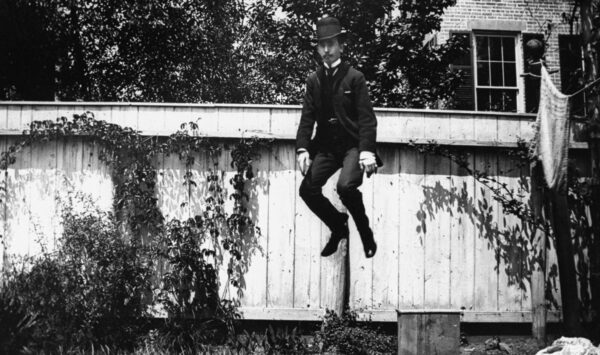
******************************************************************************************************************************** Brownstone Detectives investigates the history of our clients’ homes. The story you are about to read was composed from research conducted in the course of one of those investigations. Do you know the history of YOUR house? ******************************************************************************************************************************** In 1886, there was a LOT of jumping on Livingston Street. That year, a man by the name of Wallace G. Levison, an amateur photographer who lived on the street with his family, was testing a new type of film along with its ability to capture subjects in the process of motion. As the dawn of the 20th century approached, newer, more sensitive film emulsions were being developed that allowed pictures to be taken with faster and faster shutter speeds. Levison was set on experimenting with them. An avid photographer, he used the new technology both as a scientific tool and a recreational activity. In addition to being an amateur photographer, Levison was a chemist, inventor, and lecturer who founded the Departments of Mineralogy and Astronomy at the Brooklyn Institute of Arts and Sciences in the latter half of the 19th century. He may have also invented the concept of the “jumping selfie.” ORGANIZING SHUTTERBUGS Born at 1435 Pacific Street, Brooklyn (where – except for the 1880s-1900s – he would live for most of his life) in 1846, Levison attended Cooper Union, New York City’s prestigious free school for the sciences and arts, and graduated with a BS from Harvard in 1870. He was a member of the New York Mineralogical […]
MONKEY SHINES AT No. 72 ST. JAMES PL (1889)
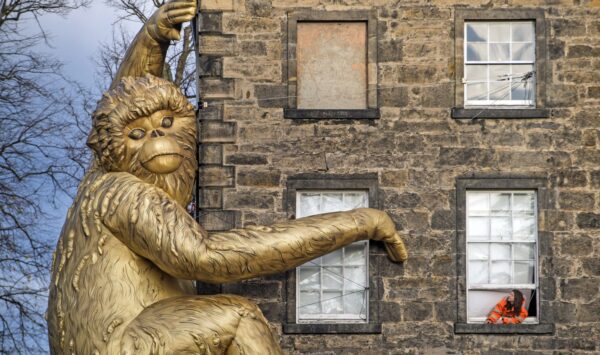
******************************************************************************************************************************** Brownstone Detectives investigates the history of our clients’ homes. The story you are about to read was composed from research conducted in the course of one of those investigations. Do you know the history of YOUR house? ******************************************************************************************************************************** A monkey in Victorian Brooklyn was not the most unusual sight to behold. In fact, the furry little creatures had been roaming the streets of the city since the introduction of the organ grinder. What was unusual, however, was waking up to one that was in “undisputed possession” of your house. ACT I – THE CREATURE APPEARS One Sunday morning in the summer of 1889 at the residence of Mr. William C. Mellins, No. 72 St James Place, Brooklyn, and in that of his next-door neighbor, lawyer William H. Morse, a disturbance of a sort took place. The 2-story and mansard brick residences of Messrs. Morse and Mellins sat, at the time, in a very rustic setting. They were “in the middle of a little block of five buildings, which have vacant lots on either end and a fruit orchard in the rear.” Well, late on a Saturday evening, Mellins happened to be drawn to a sound at his second-story front window. When he went to investigate, he looked toward the sounds, which appeared to be coming from his window. What he saw caused him to wonder if he were seeing things. There returning his gaze was a monkey clinging to his windowsill, looking into the room. Then, as quickly as […]
PAINTING THE HUDSON AT No. 75 ST. JAMES PL
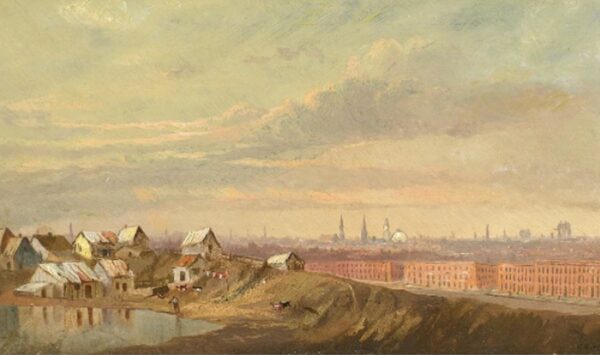
******************************************************************************************************************************** Brownstone Detectives investigates the history of our clients’ homes. The story you are about to read was composed from research conducted in the course of one of those investigations. Do you know the history of YOUR house? ******************************************************************************************************************************** Charles Day Hunt was a talented landscape painter whose work pivoted between the naturalism of the Hudson River School and the expressionism of the Tonalists. Born in Detroit, Michigan, in 1840, he eventually settled in Brooklyn, New York, around 1858 and trained under the landscape painters of the day: John F. Kensett and Alexander Wyant. Hunt’s exhibitions of oil and water color works took place from his studio at No. 75 St. James Place in Clinton Hill section of Brooklyn. Hunt’s work seamlessly blends the influences of both of his mentors in an individual style of crisp brilliance and atmospheric moodiness. Beginning in 1866 going through 1886, Hunt exhibited many times at The National Academy of Art & Design and The Brooklyn Academy of Art. He gained prominence as a member of The Black & White Club, which was a private American art association. Hunt died in 1914 in Brooklyn where, in his studio, his funeral was held. The body lay “beside the empty studio chair, pulled up before the easel,” noted the Brooklyn Daily Eagle, “on which was the picture Mr. Hunt had been working on before his seizure; the palette and oil colors were still wet.” Today, his works can be found in private and public collections, including The Brooklyn Museum […]
RESCUE OPERATION ON “BOERUM HILL” (1964)
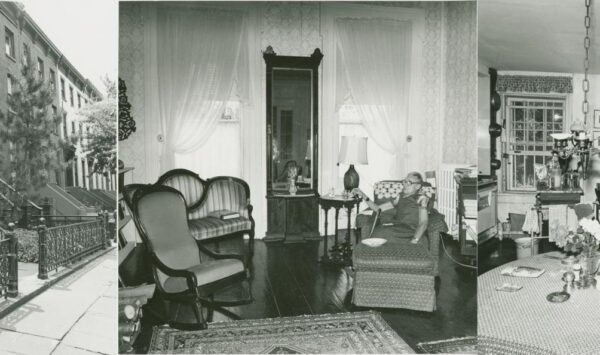
******************************************************************************************************************************** Brownstone Detectives investigates the history of our clients’ homes. The story you are about to read was composed from research conducted in the course of one of those investigations. Do you know the history of YOUR house? ******************************************************************************************************************************** Most Boerum Hill residents do not know the name Helen Buckler – but they should. While she wasn’t instrumental in building Boerum Hill, she was the reason it got its name. She also started the organization that ushered in the wave of brownstoners and brownstoning in the area, the Boerum Hill Association. Brownstoning – or the renovation of brownstones back to their former glory – is not a recent trend. Like many other movements, brownstoning appeared in parts of New York City in waves as good/bad economic times ebbed and flowed, neighborhoods fell in and out of fashion, and young professionals, who were usually the harbingers of those waves, “discovered” New York City’s 19th century brownstones. One of those waves washed over Brooklyn in the early 1960s. Helen Buckler rode, from her Dean Street brownstone, firmly atop the crest of that era’s wave. She named it Boerum Hill. BOERUM HILL BEGINS A few years after Buckler bought No. 238 Dean Street, she started the Boerum Hill Association. Then, already at the age of 70, she was no ordinary brownstoner. Her enthusiasm attracted to the organization approximately 20 like-minded families who were also interested in renovating their brownstones in the area. The purpose of the organization was to improve the community and […]
THE STRAY PATH OF A BROOKLYN BULLET (1894)
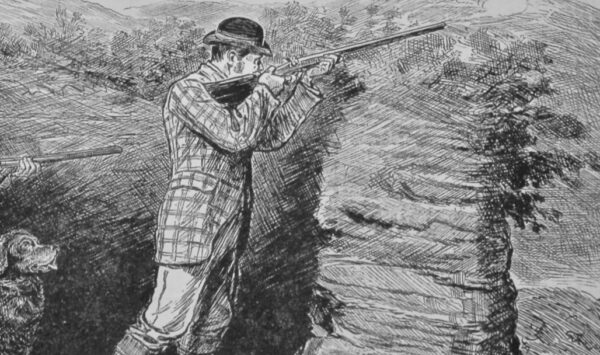
******************************************************************************************************************************** Brownstone Detectives investigates the history of our clients’ homes. The story you are about to read was composed from research conducted in the course of one of those investigations. Do you know the history of YOUR house? ******************************************************************************************************************************** Henry J. Hartig was no law-breaker. As a machinist, he had invented one of the first successful gas engines and patented numerous governor designs over his lifetime. An industrious German-born American citizen, well-known and loved throughout his Fort Greene neighborhood, Hartig was a law-abiding family man who would go on to sire five children with his wife, Emma. He started the Hartig Standard Gas Engine Company, manufacturing his engines – which used illuminating gas for fuel – from the early 1890s and well into the 20th century. And so, possessing the intense interest in creating, tinkering and experimenting that drives all serious inventors, his hunger for learning drew him into a variety of fields that sparked his interest. One of them was guns. Hartig owned at least one firearm – a Flobert Remington “Cadet” .22 rifle – with which he enjoyed taking target practice in his backyard. But when a stray bullet from that weapon struck an innocent man one lazy summer afternoon, it looked as though Hartig would lose it all. “CULLOM WAS HALF ASLEEP WHEN HE FELT A SHARP TWINGE…” Of course it was an accident, and many Brooklynites were owners of firearms in the 1890s – it was that kind of place back then. But then again, the […]
THE SALE OF FORT GREENE (1798)
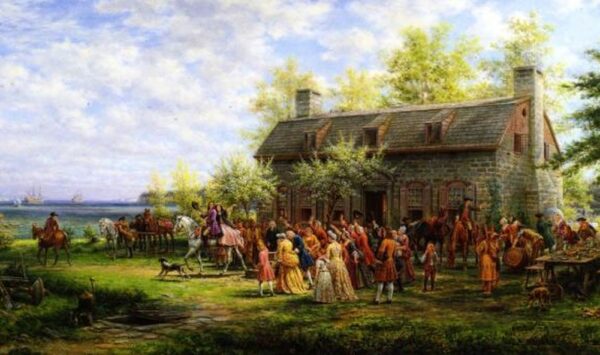
******************************************************************************************************************************** Brownstone Detectives investigates the history of our clients’ homes. The story you are about to read was composed from research conducted in the course of one of those investigations. Do you know the history of YOUR house? ******************************************************************************************************************************** In 1798, the farm that had been in the Couwenhoven family for 100 years was being foreclosed on. John Remsen Couwenhoven had creditors to pay, and the land he had inherited about 20 years earlier from his brother, Rem, was what the judge knew would pay them back. Thus he was ordered to place his land into the hands of a number of trustees. They would take over the responsibility of cataloging all that he owned, setting prices on all of his personal and real property, publicly listing it for sale, and then following through with the land’s conveyance. On the set date in May, the Couwenhoven farm was swarming with activity, as men – and women – of every Dutch family, it seemed, determined what of Couwenhoen’s possessions they wanted. The squeals of hogs, the murmurs of numerous discussions, the sounds of everyday life on a farm must have been omnipresent as potential purchasers walked the farm and evaluated the many items for sale. And when that sale began, there seemed to be a buyer for every item. Samuel Schenck got a “Frame for a Waggon,” Simon Bergen got a “grindstone,” Barent Lefferts got a “Flax Mill,” Mr. Grant got Couwenhoven’s ladders, and a Mr. Hall got a “Grain Rake.” […]
SHOT BY AN ORGAN GRINDER (1895)
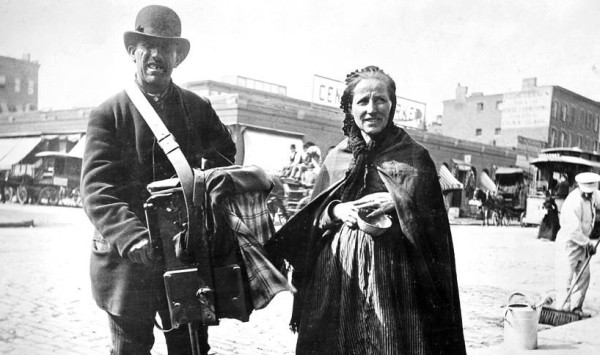
******************************************************************************************************************************** Brownstone Detectives investigates the history of our clients’ homes. The story you are about to read was composed from research conducted in the course of one of those investigations. Do you know the history of YOUR house? ******************************************************************************************************************************** Two things can be said of most 19th century Brooklyn organ grinders – they were rarely accompanied by monkey assistants, and they were chiefly non-violent types. As romantic a figure as they are to us today, though, they were not altogether loved by the citizens of their time. Many found the “music” of their hand organs to be grating and and an unforgivable breach of the peace. By and large, most were harmless poor Italian men simply plying their trade in order to bring in a meager living – usually to feed a large family. One morning, though, in December of 1895, the tune of one grinder did not present as sonorous music to the ears of a rising Brooklynite, and in the process this resident found that, attempting to prevent the strains of a lilting ballad, he had “stirred the wrong Italian.” OUTSIDE A BAR ON AN EARLY MONDAY MORNING Michielo Geraso, accompanied by another Italian with a hand organ, appeared in front of the saloon of Bernard Lyons on Tillary street at about 9:30 a.m. Geraso’s companion turned the organ crank while Geraso “made ready to collect money.” The organ had scarcely tuned up when the Italians were ordered to move on. Lyons’ saloon was closed on account of […]
HE KNOWS HIS JEWELS ARE SAFE (1892)
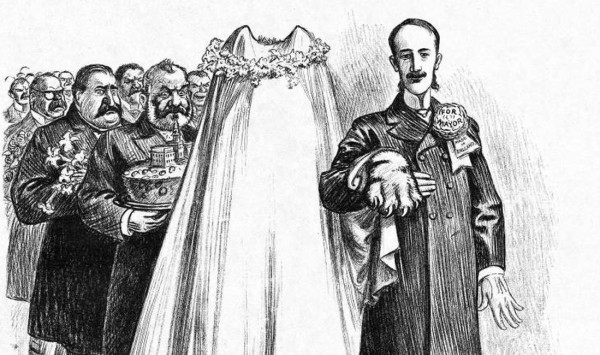
******************************************************************************************************************************** Brownstone Detectives investigates the history of our clients’ homes. The story you are about to read was composed from research conducted in the course of one of those investigations. Do you know the history of YOUR house? ******************************************************************************************************************************** When the daughter of a Tammany Hall “boss” is married, how does the new son-in-law protect their wedding gifts? By installing a jewel vault in the cellar of his brownstone, of course! THE JEWEL VAULT ON WASHINGTON PARK When Dr. Alexander F. Carroll married the eldest daughter of Brooklyn Democratic Boss, Hugh McLaughlin, in 1890, the New York Times reported that the “wedding gifts were of the most costly and elaborate nature.” “So valuable were they,” New York’s paper of record continued, “that when Mr. and Mrs. Carroll moved to their Washington Park home they had a great burglar-proof vault built under the sidewalk.” Apparently, all of the Boss’s numerous friends and supporters “remembered the happy couple substantially” which presented them with a good problem to have – how to safeguard their extreme amount of new-found jewel wealth. A list of the bridal presents “covered three columns in the Eagle,” noted The New York Sun, the presenters of which included then-President Cleveland. The value of the gifts were variously estimated at “from $100,000 to $200,000.” Mrs. Carroll was “very much worried because she has had to keep the mass of gold and silver received at the time of her marriage in the house and has had private detectives watching the premises.” […]
THE LION COMIQUE OF 276 CARLTON AVE (1930)
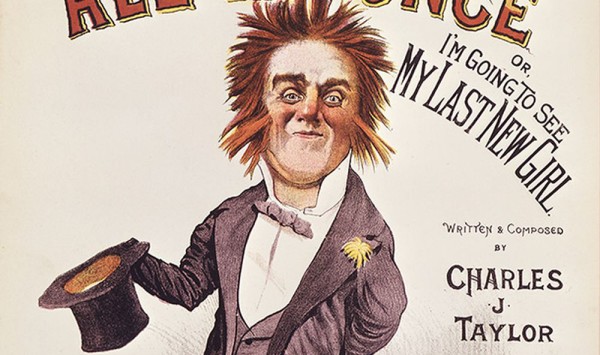
******************************************************************************************************************************** Brownstone Detectives investigates the history of our clients’ homes. The story you are about to read was composed from research conducted in the course of one of those investigations. Do you know the history of YOUR house? ******************************************************************************************************************************** Fred Roberts was known in the “seventies” as one of the great comic singers of the variety show. He sang the topical and comic songs that were then popular, often making them well-known himself. Brought over from London by the legendary Harrigan & Hart, Roberts had been known in the English music halls as a “Lion Comique” – a music hall character that was the heart throb of the Victorian era, holding the same cult status as today’s boy bands. According to The Victorian Music Hall: Culture, Class and Conflict, the songs the lions comiques sang were “hymns of praise to the virtues of idleness, womanising and drinking.” In Roberts’ songs, he “deliberately distorted social reality for amusement and escapism.” One critic in the late 19th century remarked that the Lions Comiques were “men who set women just a little higher than their bottle.” Roberts was to be Harrigan & Hart’s answer to the popularity of the famous impresario, Tony Pastor. He soon had a string of hits that were “hummed and whistled around the town” from the 1870s through to the early 20th century when he retired. Roberts’ first song, “Oh, Fred, Tell Them to Stop,” was such a huge hit that he decided to stay in the U.S. and […]
THE CANUCK NURSES OF 172 LAFAYETTE (1909)
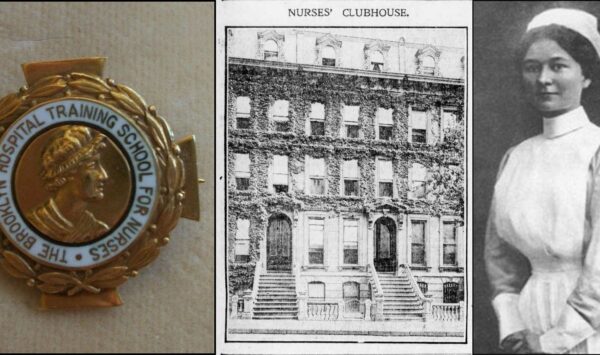
******************************************************************************************************************************** Brownstone Detectives investigates the history of our clients’ homes. The story you are about to read was composed from research conducted in the course of one of those investigations. Do you know the history of YOUR house? ******************************************************************************************************************************** During the late 19th century, when much of New York City’s brownstone stock was constructed, many of these townhouses were initially used as the clubhouses for any number of the organizations and clubs existent then. There were Republican and Democratic clubs, bicycling clubs, social clubs, actors’ guilds, athletic clubs, and countless other organizations dedicated to the betterment and/or pleasure of their memberships. Those clubs with the money and the membership were able to afford to purchase – or rent – a brownstone for the use of its membership. In 1909, at No. 172 Lafayette Avenue, a club for graduates of the “Brooklyn Hospital Training School for Nurses” – which was “always in reach of doctors” – was set up,” noted the Brooklyn Daily Eagle. The purpose of the club was as a social center and a business office for nurses, as well as a location where they could “entertain their friends.” The Nurses Club, only in existence for a “couple of years” by that point, had – in that short period of time – made “enviable progress.” Previously located at No. 255 Carlton avenue, it was not long before the capacity of that house was taxed to its limits. In 1909, the pressure became so great that this larger clubhouse on […]